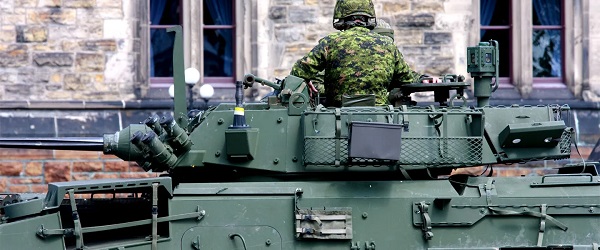Business
Data Center Demand: The Biden-Harris Energy Transition Will Just Have To Wait

A nuclear power plant
From the Daily Caller News Foundation
Google has made big news in the energy space over the past week, and all of it conflicts with the Harris-Biden goals of a glorious future powered entirely by windmills, solar arrays and presumably some combination of Unicorn fur and fairy dust.
Last week, the Washington Post ran a major story detailing the fact that Nebraska’s Omaha Public Power District (OPPD) will be forced to keep two coal-fired power generation units running for years longer than previously planned to accommodate the electricity needs of new data centers being built in the area by Google and Meta. Originally scheduled to be shuttered at the end of 2023, the units will now remain active through 2026, and local residents and activists expressed skepticism they will be shut down even then.
“A promise was made, and then they broke it,” the Post quotes local resident Cheryl Weston as saying. “The tech companies bear responsibility for this. The coal plant is still open because they need all this energy to grow.”
Well, yes, they do. Given the way supposed deadlines and promises related to this government-forced energy transition have been consistently extended and broken, Weston’s skepticism seems well-grounded.
By now, most everyone is aware of the enormous new demand the proliferation of data centers is placing on the U.S. regional power grids. The new demand from Big Tech is being added to an electric system already strained by huge demands from crypto mining, EV charging and general population growth and economic expansion.
This demand growth threatens to overwhelm the ability of power companies to build new electric generating capacity rapidly enough to keep up. This is especially true for companies operating in areas that restrict such new generating capacity to be “green,” i.e. intermittent wind and solar.
In the Washington Post’s story, the OPPD attributes the need to keep the coal units running on the slow development of anticipated new wind and solar capacity. But that avoids the reality that these data centers and other big power demand hogs require reliable generation, 24 hours a day, 7 days every week. The limitations of intermittent, weather-dependent wind and solar, even when combined with current backup battery tech, leaves companies like Google and Meta demanding more reliable, consistent generation.
This reality is not limited to the Omaha area. On Monday, the Wall Street Journal reported that Google and parent company Alphabet are also backing a new company engaged in the development of a new generation of modular nuclear reactors as a means of securing its future electricity supplies. In a deal with nuclear startup Kairos Power, Google commits to buying power from seven Kairos reactors when they go live in the coming years.
“The end goal here is 24/7, carbon-free energy,” Google/Alphabet senior director for energy and climate Michael Terrell said. “We feel like in order to meet goals around round-the-clock clean energy, you’re going to need to have technologies that complement wind and solar and lithium-ion storage.”
These developments involving Google and Meta come on the heels of other recent stories detailing efforts by tech giants to secure their future power needs. In early October, Constellation Energy announced it will reactivate its Three Mile Island nuclear plant in Pennsylvania to feed the power needs of nearby data centers under development by Microsoft. Constellation announced a similar deal in July to power data centers owned by Amazon from other nuclear facilities it operates.
The securing of their own power supplies could well become a requirement for big tech companies in some regions, as regulators and grid managers become increasingly concerned about their potential to drain regional grids of needed capacity to keep the lights on for everyone else. Bloomberg recently reported on comments by Thomas Gleeson, Chairman of the Public Utilities Commission of Texas, warning data center developers they should plan to provide at least part of their own power needs if they wish to connect to the grid in a timely fashion.
What it all means is that demand for reliable, 24/7 power supplied by nuclear, natural gas and even coal is going to continue rising for the foreseeable future. The glorious energy transition will just have to wait for reality.
David Blackmon is an energy writer and consultant based in Texas. He spent 40 years in the oil and gas business, where he specialized in public policy and communications.
Automotive
Federal government should swiftly axe foolish EV mandate

From the Fraser Institute
Two recent events exemplify the fundamental irrationality that is Canada’s electric vehicle (EV) policy.
First, the Carney government re-committed to Justin Trudeau’s EV transition mandate that by 2035 all (that’s 100 per cent) of new car sales in Canada consist of “zero emission vehicles” including battery EVs, plug-in hybrid EVs and fuel-cell powered vehicles (which are virtually non-existent in today’s market). This policy has been a foolish idea since inception. The mass of car-buyers in Canada showed little desire to buy them in 2022, when the government announced the plan, and they still don’t want them.
Second, President Trump’s “Big Beautiful” budget bill has slashed taxpayer subsidies for buying new and used EVs, ended federal support for EV charging stations, and limited the ability of states to use fuel standards to force EVs onto the sales lot. Of course, Canada should not craft policy to simply match U.S. policy, but in light of policy changes south of the border Canadian policymakers would be wise to give their own EV policies a rethink.
And in this case, a rethink—that is, scrapping Ottawa’s mandate—would only benefit most Canadians. Indeed, most Canadians disapprove of the mandate; most do not want to buy EVs; most can’t afford to buy EVs (which are more expensive than traditional internal combustion vehicles and more expensive to insure and repair); and if they do manage to swing the cost of an EV, most will likely find it difficult to find public charging stations.
Also, consider this. Globally, the mining sector likely lacks the ability to keep up with the supply of metals needed to produce EVs and satisfy government mandates like we have in Canada, potentially further driving up production costs and ultimately sticker prices.
Finally, if you’re worried about losing the climate and environmental benefits of an EV transition, you should, well, not worry that much. The benefits of vehicle electrification for climate/environmental risk reduction have been oversold. In some circumstances EVs can help reduce GHG emissions—in others, they can make them worse. It depends on the fuel used to generate electricity used to charge them. And EVs have environmental negatives of their own—their fancy tires cause a lot of fine particulate pollution, one of the more harmful types of air pollution that can affect our health. And when they burst into flames (which they do with disturbing regularity) they spew toxic metals and plastics into the air with abandon.
So, to sum up in point form. Prime Minister Carney’s government has re-upped its commitment to the Trudeau-era 2035 EV mandate even while Canadians have shown for years that most don’t want to buy them. EVs don’t provide meaningful environmental benefits. They represent the worst of public policy (picking winning or losing technologies in mass markets). They are unjust (tax-robbing people who can’t afford them to subsidize those who can). And taxpayer-funded “investments” in EVs and EV-battery technology will likely be wasted in light of the diminishing U.S. market for Canadian EV tech.
If ever there was a policy so justifiably axed on its failed merits, it’s Ottawa’s EV mandate. Hopefully, the pragmatists we’ve heard much about since Carney’s election victory will acknowledge EV reality.
Business
Prime minister can make good on campaign promise by reforming Canada Health Act

From the Fraser Institute
While running for the job of leading the country, Prime Minister Carney promised to defend the Canada Health Act (CHA) and build a health-care system Canadians can be proud of. Unfortunately, to have any hope of accomplishing the latter promise, he must break the former and reform the CHA.
As long as Ottawa upholds and maintains the CHA in its current form, Canadians will not have a timely, accessible and high-quality universal health-care system they can be proud of.
Consider for a moment the remarkably poor state of health care in Canada today. According to international comparisons of universal health-care systems, Canadians endure some of the lowest access to physicians, medical technologies and hospital beds in the developed world, and wait in queues for health care that routinely rank among the longest in the developed world. This is all happening despite Canadians paying for one of the developed world’s most expensive universal-access health-care systems.
None of this is new. Canada’s poor ranking in the availability of services—despite high spending—reaches back at least two decades. And wait times for health care have nearly tripled since the early 1990s. Back then, in 1993, Canadians could expect to wait 9.3 weeks for medical treatment after GP referral compared to 30 weeks in 2024.
But fortunately, we can find the solutions to our health-care woes in other countries such as Germany, Switzerland, the Netherlands and Australia, which all provide more timely access to quality universal care. Every one of these countries requires patient cost-sharing for physician and hospital services, and allows private competition in the delivery of universally accessible services with money following patients to hospitals and surgical clinics. And all these countries allow private purchases of health care, as this reduces the burden on the publicly-funded system and creates a valuable pressure valve for it.
And this brings us back to the CHA, which contains the federal government’s requirements for provincial policymaking. To receive their full federal cash transfers for health care from Ottawa (totalling nearly $55 billion in 2025/26) provinces must abide by CHA rules and regulations.
And therein lies the rub—the CHA expressly disallows requiring patients to share the cost of treatment while the CHA’s often vaguely defined terms and conditions have been used by federal governments to discourage a larger role for the private sector in the delivery of health-care services.
Clearly, it’s time for Ottawa’s approach to reflect a more contemporary understanding of how to structure a truly world-class universal health-care system.
Prime Minister Carney can begin by learning from the federal government’s own welfare reforms in the 1990s, which reduced federal transfers and allowed provinces more flexibility with policymaking. The resulting period of provincial policy innovation reduced welfare dependency and government spending on social assistance (i.e. savings for taxpayers). When Ottawa stepped back and allowed the provinces to vary policy to their unique circumstances, Canadians got improved outcomes for fewer dollars.
We need that same approach for health care today, and it begins with the federal government reforming the CHA to expressly allow provinces the ability to explore alternate policy approaches, while maintaining the foundational principles of universality.
Next, the Carney government should either hold cash transfers for health care constant (in nominal terms), reduce them or eliminate them entirely with a concordant reduction in federal taxes. By reducing (or eliminating) the pool of cash tied to the strings of the CHA, provinces would have greater freedom to pursue reform policies they consider to be in the best interests of their residents without federal intervention.
After more than four decades of effectively mandating failing health policy, it’s high time to remove ambiguity and minimize uncertainty—and the potential for politically motivated interpretations—in the CHA. If Prime Minister Carney wants Canadians to finally have a world-class health-care system then can be proud of, he should allow the provinces to choose their own set of universal health-care policies. The first step is to fix, rather than defend, the 40-year-old legislation holding the provinces back.
-

 Business1 day ago
Business1 day agoPrime minister can make good on campaign promise by reforming Canada Health Act
-

 International2 days ago
International2 days agoChicago suburb purchases childhood home of Pope Leo XIV
-

 Daily Caller2 days ago
Daily Caller2 days agoBlackouts Coming If America Continues With Biden-Era Green Frenzy, Trump Admin Warns
-

 Daily Caller2 days ago
Daily Caller2 days ago‘I Know How These People Operate’: Fmr CIA Officer Calls BS On FBI’s New Epstein Intel
-

 Crime1 day ago
Crime1 day ago“This is a total fucking disaster”
-

 Fraser Institute1 day ago
Fraser Institute1 day agoBefore Trudeau average annual immigration was 617,800. Under Trudeau number skyrocketted to 1.4 million from 2016 to 2024
-

 Alberta5 hours ago
Alberta5 hours ago‘Far too serious for such uninformed, careless journalism’: Complaint filed against Globe and Mail article challenging Alberta’s gender surgery law
-

 Frontier Centre for Public Policy1 day ago
Frontier Centre for Public Policy1 day agoNew Book Warns The Decline In Marriage Comes At A High Cost








